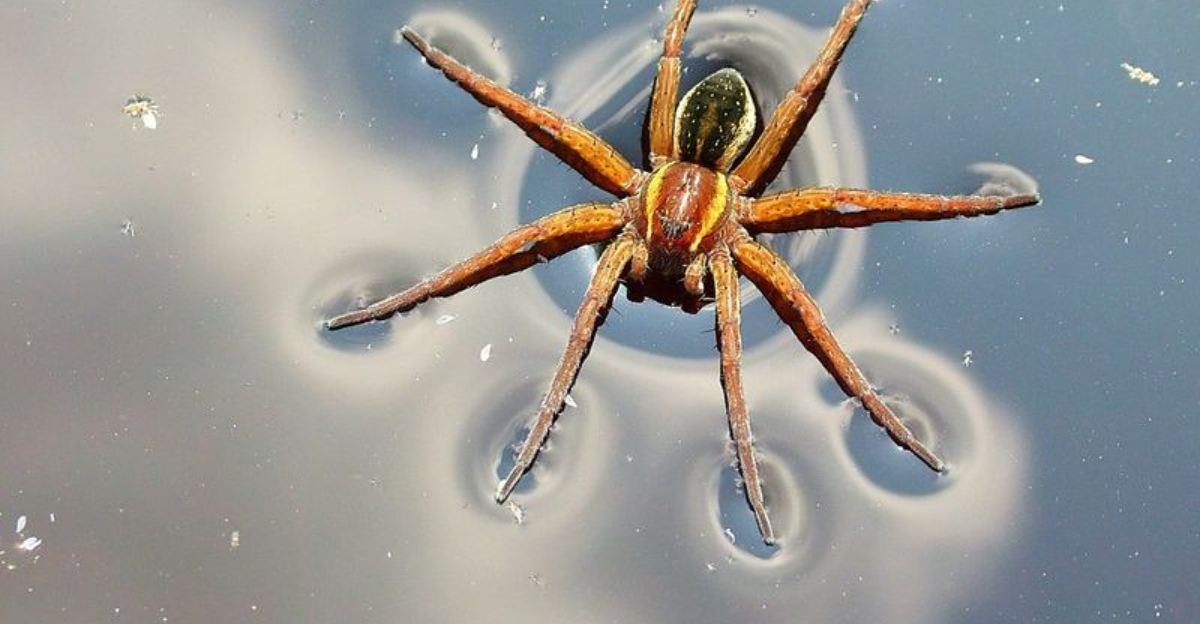In the animal kingdom, some creatures possess the seemingly magical ability to walk on water. This extraordinary feat can occur due to unique physical adaptations, incredible speed, or clever uses of surface tension.
Let’s dive into the fascinating world of these amazing animals, each showcasing their own unique method of walking on water, or at least giving the impression that they can.
1. Basilisk Lizard
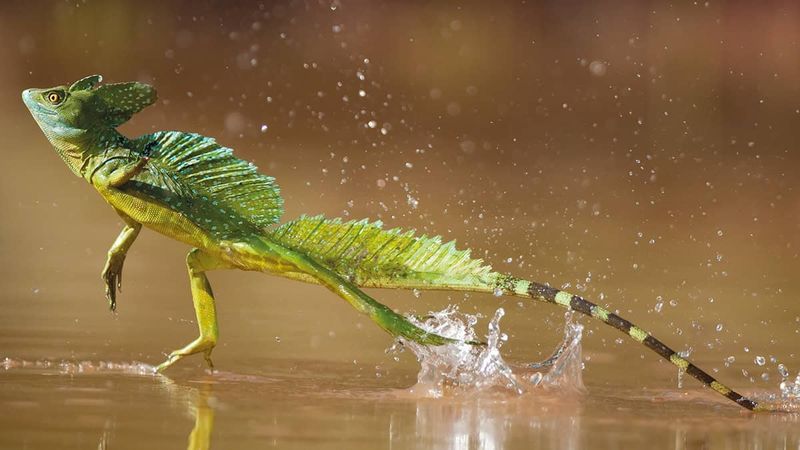
Known as the ‘Jesus Lizard,’ the basilisk lizard astonishes with its ability to run across water. This remarkable skill is due to its long toes with fringes of skin, which help it stay afloat.
Weighing less than a pound, these lizards take advantage of their lightweight to achieve this feat. Their movement involves rapid foot slaps against the water, creating air pockets that temporarily keep them on the surface.
Native to Central and South American rainforests, basilisks can reach speeds of up to 5 feet per second. While primarily a mode of escape from predators, this water-walking ability also aids in foraging. Watching a basilisk in action is like witnessing a living miracle, seamlessly blending evolution with agility.
2. Western Grebe
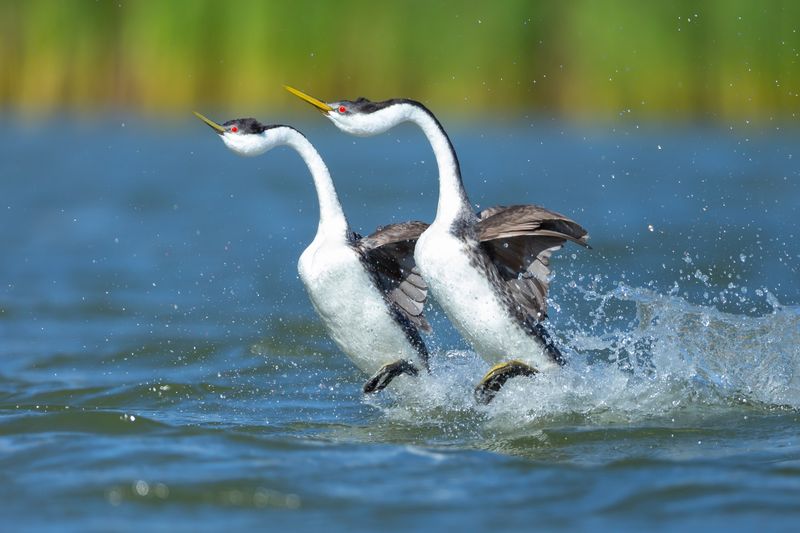
The Western Grebe performs a captivating ‘rushing’ dance, appearing to walk on water. This spectacle is part of their courtship ritual, showcasing both balance and grace.
As they press their feet against the water, these birds create rapid backward thrusts. The water’s surface tension supports this temporary illusion of water-walking.
Found in North America’s freshwater lakes, these grebes are sleek, with long necks and striking red eyes. This dance not only serves as a mating display but also strengthens pair bonds. Observing this artful performance is like watching nature’s ballet, where precision meets elegance.
3. Water Strider
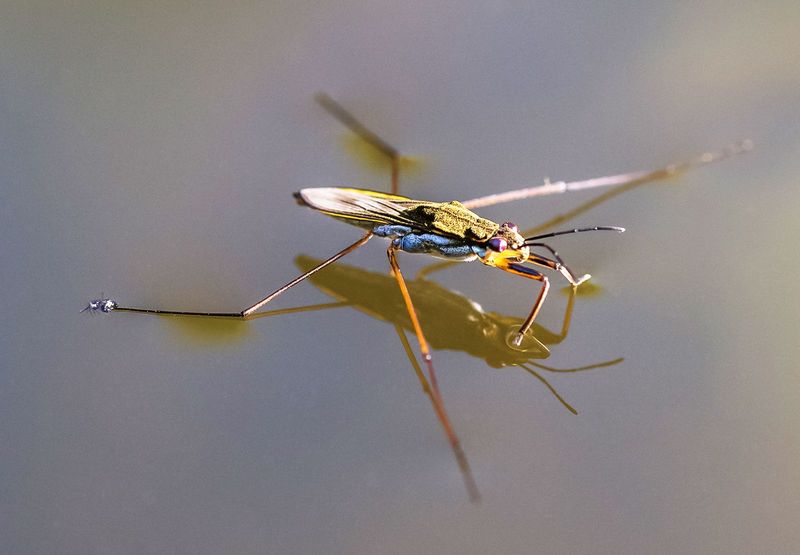
Water striders are insects that elegantly glide across water surfaces. This ability stems from their long, hydrophobic legs that repel water, allowing them to utilize surface tension effectively.
These legs distribute the insect’s weight, preventing it from sinking and enabling swift movement across ponds and lakes.
Water striders are found globally, favoring still or slow-moving waters. Their diet consists mainly of insects that fall into the water, making them efficient predators. Watching a water strider is like observing a masterful dance, as it swiftly changes direction with minimal effort.
4. Pygmy Geckos
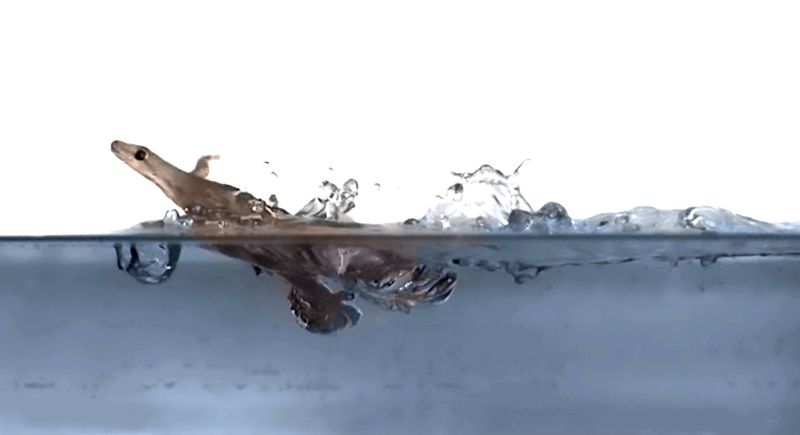
Pygmy geckos, though tiny, possess a surprising ability to stay afloat on water. This adaptation is due to their water-repellent skin and lightweight body, allowing them to avoid drowning.
Unlike larger creatures, they don’t run across water but can survive temporary flooding by simply floating. Native to the rainforests of South America, these geckos take advantage of their environment to evade predators.
Their survival strategy includes feeding on tiny insects, making them adept climbers and swimmers. Witnessing a pygmy gecko survive against the odds is a testament to nature’s ingenuity and resilience.
5. Fishing Spider
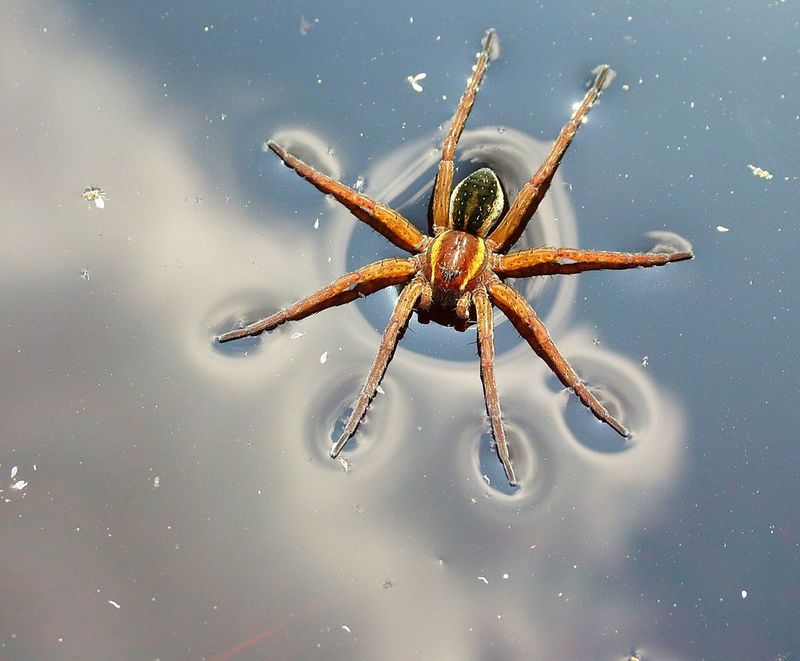
Fishing spiders are adept at traversing water surfaces, thanks to their hydrophobic legs and buoyant bodies.
These arachnids have air-trapping hairs that prevent sinking, enabling them to hunt aquatic prey. They can walk or run on water, often seen in freshwater habitats such as ponds and streams. Fishing spiders are skilled hunters, capable of catching fish and tadpoles.
Their remarkable adaptation to water also involves diving and remaining submerged for short periods. Observing a fishing spider in action is witnessing the remarkable confluence of versatility and predation.
6. Common Moorhen
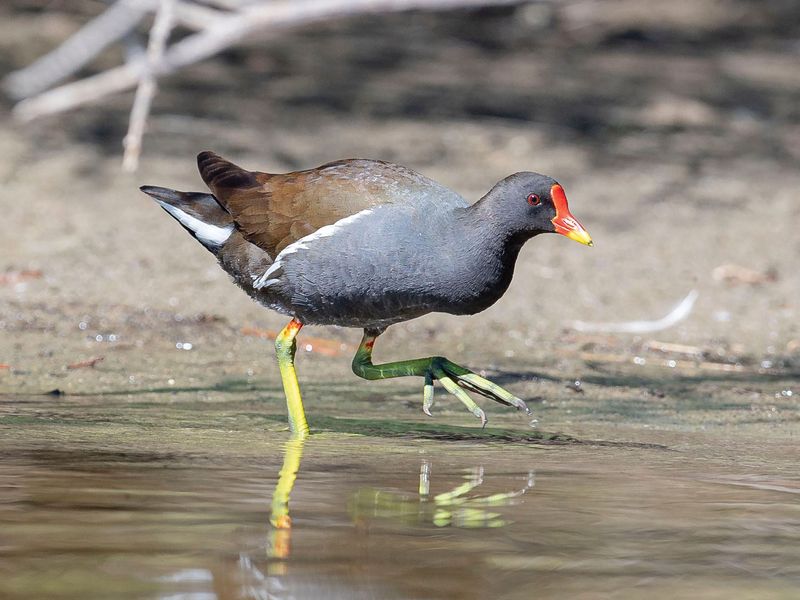
The Common Moorhen, often seen darting across water, makes use of its partially webbed feet to traverse aquatic environments.
These birds are well adapted to life on and around water, often seen walking on lily pads and other floating vegetation. They are found worldwide, in marshes, ponds, and lakes, where they forage on aquatic plants and small creatures.
Their ability to ‘walk’ on water stems from their light weight and the support provided by vegetation. Watching them navigate their watery domain is like observing nature’s own tightrope walkers, balancing with ease and grace.
7. Dolphins
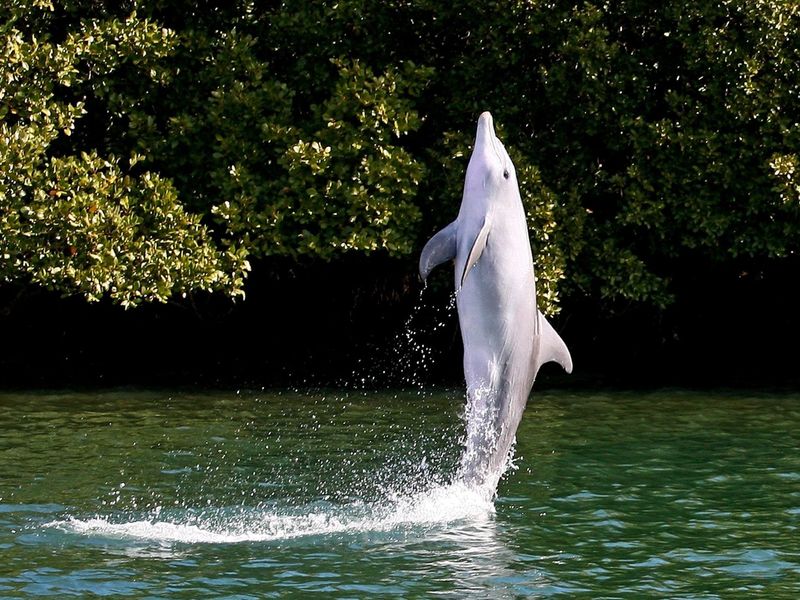
While dolphins cannot literally walk on water, their acrobatic leaps and spins give the illusion of doing so. These marine mammals are renowned for their intelligence and playfulness in the ocean.
Their powerful tails propel them through water, enabling them to breach the surface in impressive displays. Found in oceans worldwide, dolphins are highly social animals, often seen in pods.
Their water ‘walking’ is actually a demonstration of speed and agility. Observing dolphins play is a joyful reminder of the wonders beneath the waves, where intelligence meets grace.
8. Jesus Christ Bird (Northern Jacana)
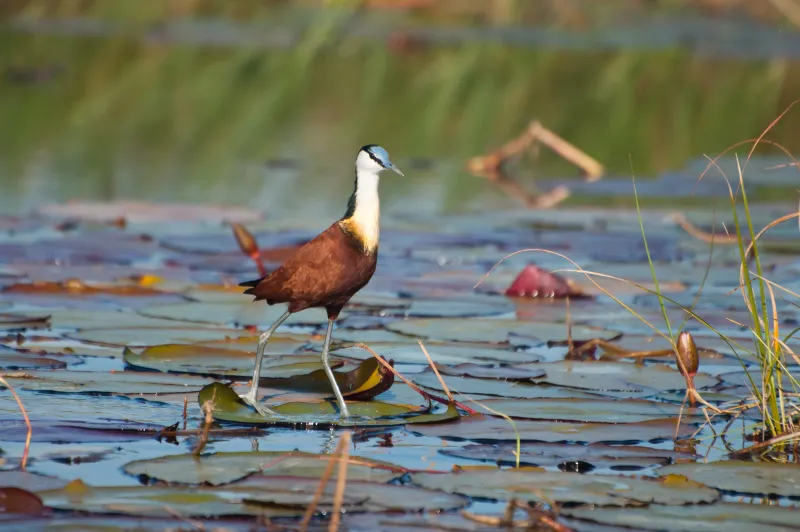
The Northern Jacana, or ‘Jesus Christ Bird,’ is known for its remarkable ability to walk on lily pads. This skill is due to its elongated toes, which distribute its weight across large areas.
Native to tropical areas from Mexico to Panama, these birds are often seen in wetlands, effortlessly striding across vegetation. Their diet consists of insects and aquatic invertebrates.
The jacana’s unique adaptation allows it to access food resources unavailable to heavier birds. Watching them in their natural habitat is akin to witnessing a delicate performance, where nature’s balance is on full display.
9. Green Iguana
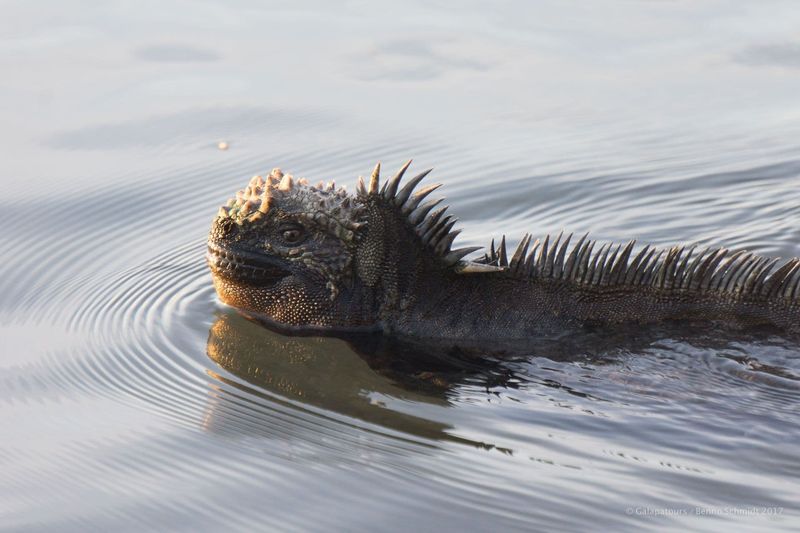
Green iguanas can give the impression of walking on water, especially when they dive from trees into rivers.
These reptiles are strong swimmers, often seen in Central and South American forests. Their powerful limbs and tail help them navigate swiftly through water, propelling them forward with grace. As herbivores, they primarily feed on leaves and fruits.
Their water-walking illusion is part of their escape strategy from predators. Observing an iguana in its arboreal habitat is to appreciate a creature perfectly adapted to both land and water.
10. Mallard Ducklings
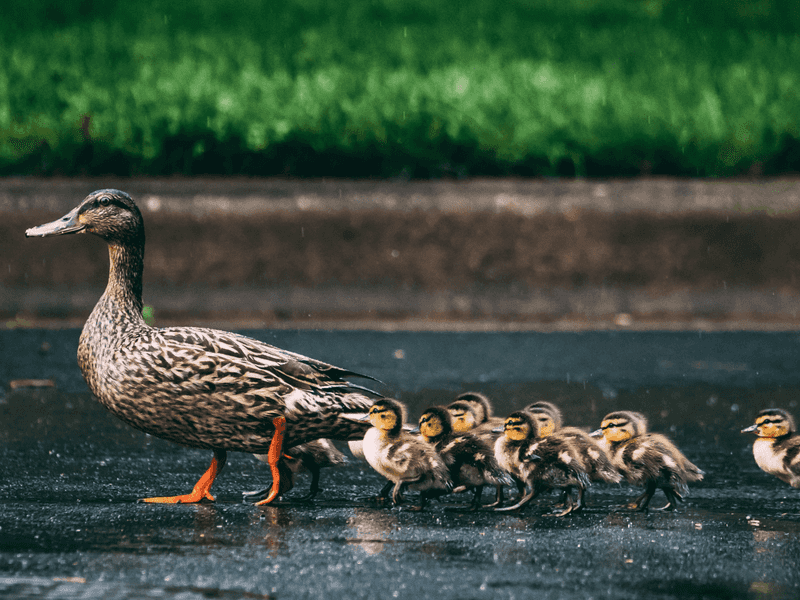
Mallard ducklings, with their buoyant bodies and small size, seem to skim across the water’s surface. This appearance is due to their light weight and the way they paddle with their webbed feet.
These ducklings are common in freshwater habitats across North America and Europe. Their diet includes aquatic plants and tiny insects, essential for their growth.
Their skimming is a playful display of youthful energy and adaptability. Watching ducklings in a pond is a delightful scene, evoking a sense of peace and joy in their gentle movement.
11. Slender Anole
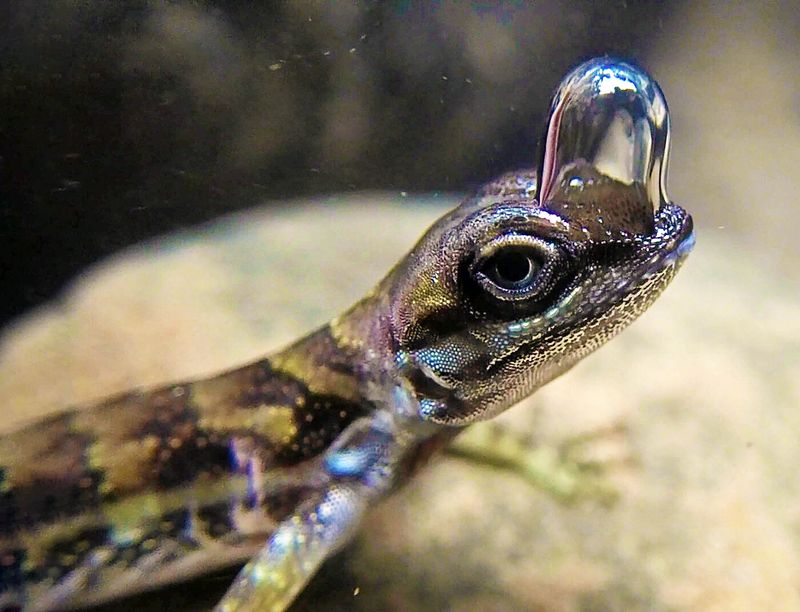
Slender anoles, though not true water-walkers, can glide across surfaces when escaping predators. Their agility and lightweight bodies enable them to perform this feat.
Found in tropical forests, these lizards are excellent climbers, often jumping from branches to the ground. Their diet mainly consists of insects, making them efficient hunters.
Their ability to seemingly walk on water is a result of rapid movement and surface tension. Observing an anole in its natural habitat is like witnessing a tiny acrobat, skillfully navigating its environment.
12. Pond Skater
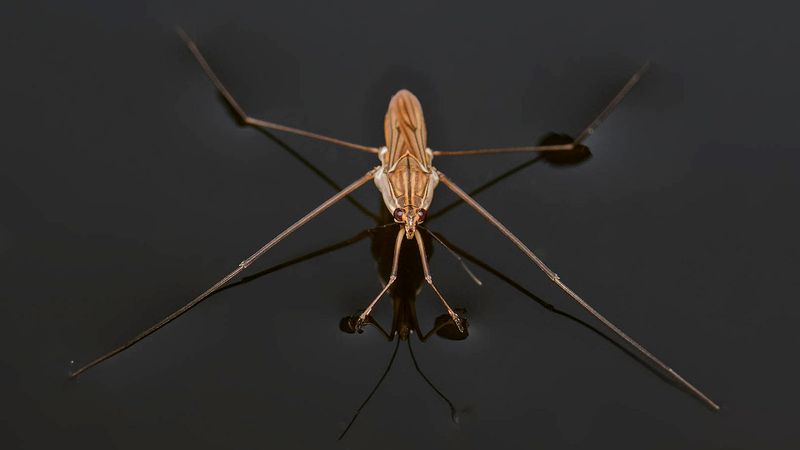
Pond skaters, like their close relatives the water striders, are masters at moving across water surfaces. Their long legs and light bodies allow them to take full advantage of surface tension, preventing them from sinking.
These insects are found in calm freshwater areas, where they hunt other insects. Their ability to walk on water is not only a mode of transport but also a hunting strategy. Watching pond skaters in action is akin to observing a ballet, with their gentle glides and sudden movements creating a mesmerizing dance.
13. Whirligig Beetle
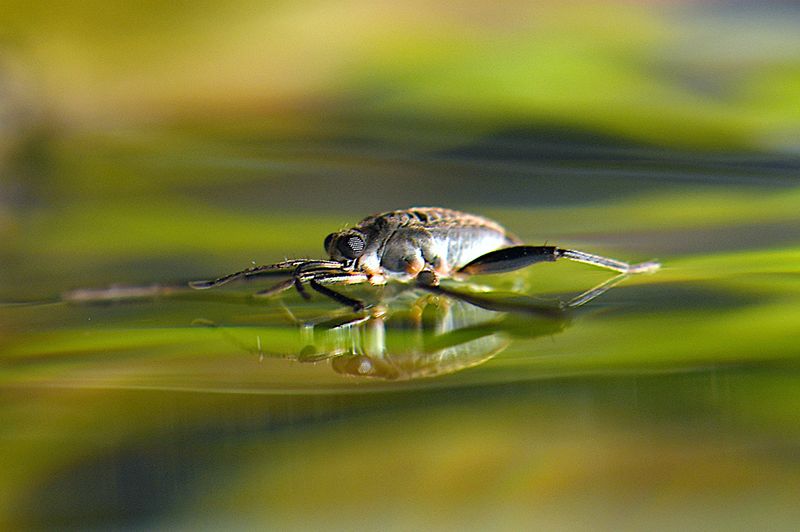
Whirligig beetles are small aquatic insects known for their rapid, circular movements on water surfaces. With divided eyes, they can see both above and below water, aiding in navigation and predator avoidance.
Their unique movement is a result of synchronized paddling, which creates whirlpool-like patterns. Found in freshwater habitats, these beetles often form groups, enhancing their survival. Their water-walking ability is both a defensive tactic and a feeding strategy.
Observing whirligigs is like watching nature’s carousel, where constant motion creates a captivating spectacle.
14. Long-Legged Fly
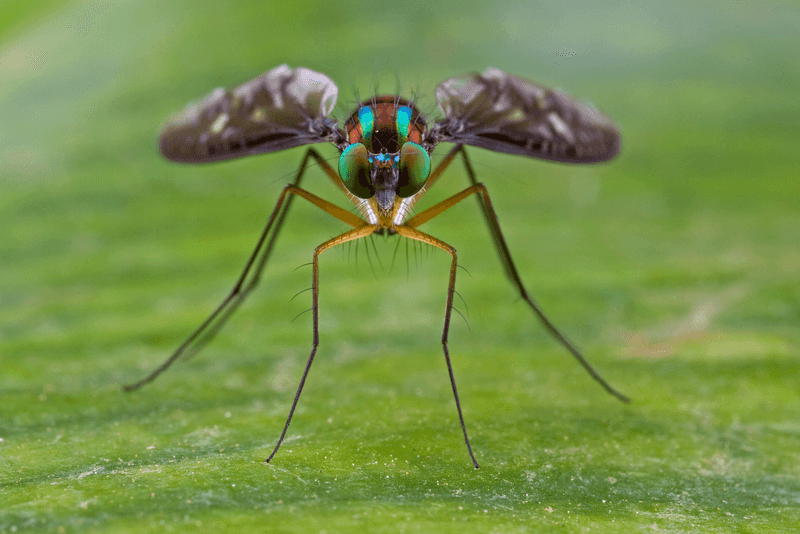
Long-legged flies, with their slender bodies and long legs, display an uncanny ability to walk on water. This is made possible by their hydrophobic legs, which repel water, maintaining buoyancy. These flies are often found near bodies of water, where they prey on smaller insects.
Their movement is quick, allowing them to escape predators with ease. Their water-walking is a symphony of balance and speed. Observing these flies is like witnessing a performance where agility meets precision, and nature’s engineering takes center stage.

